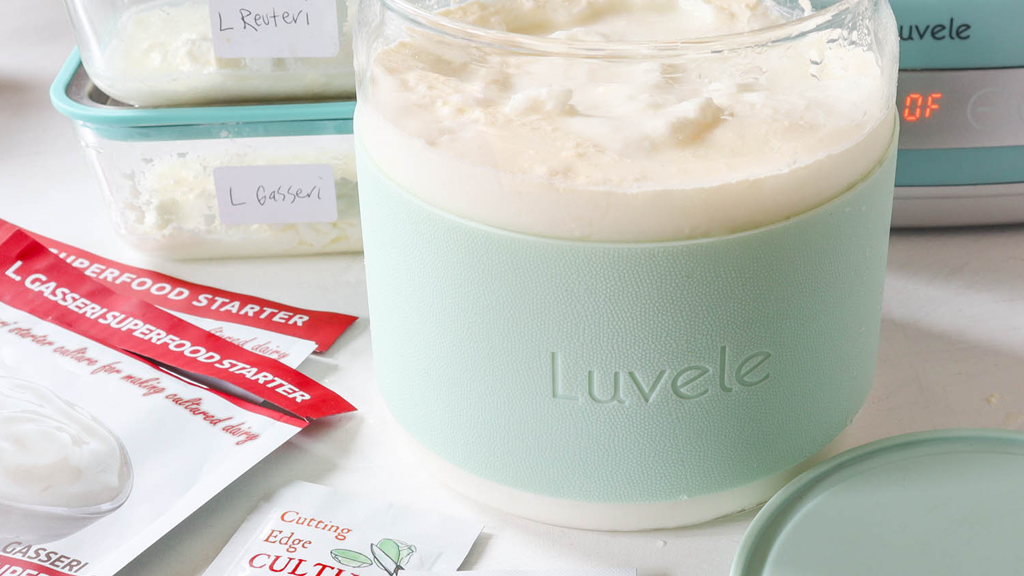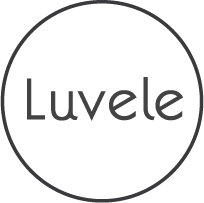Your Cart is Empty

SIBO yogurt recipe
Barb Hodgens
Barb Hodgens loves to cook with alternative, healthy whole food ingredients, with a focus on gut health. Barb has overcome her own gut health issues through healthy eating. Share your ideas, comments and photos at the end of this post :)

A fermented food for treating SIBO.
Over the last 50 years, we have been exposed to many things that have changed the composition and location, of microbes living in our gastrointestinal tracts. Today it’s estimated that 1 in 3 of us have SIBO, ‘small intestinal bacterial overgrowth,’ which is defined as excessive bacteria in the small intestine, or small bowel. While bacteria naturally occur throughout the whole digestive tract, in a healthy system, the small intestine should have low levels of bacteria. When bacteria invade and take over the small intestine, it can lead to an array of health problems. Even issues thought not to be related to the gut can correlate with SIBO symptoms.
SIBO is a chronic condition that can be cured, but it takes patience, perseverance, and a change in diet. An excellent way to help heal SIBO is to eat homemade yogurt made from specific strains that are known to colonize the upper GI tract.

Dr William Davis has developed many probiotic fermented dairy yogurts that have helped his followers heal irreversible health problems. This SIBO yogurt recipe is based on the one Dr. Davis featured in his book 'Super Gut'. He recommends three powerful strains, L. reuteri, L. gasseri, and Bacillus coagulans. In this version, we combine two Cutting Edge Culture starters, L. Gasseri Superfood Starter and Lactobacillus Reuteri Superfood Starter, which both produce bacteriocins (natural antibiotics) that are effective in killing or suppressing SIBO.
For this recipe, you'll need to have a jar of homemade L. reuteri yogurt and a jar of homemade L. gasseri yogurt already made. Or at least, a portion of each saved in an airtight container in your fridge. Once you do, you'll use a tablespoon of each as the starter for SIBO yogurt. Once you’ve made a jar of SIBO yogurt, you can use some of it to re-ferment subsequent batches. Reculture for as long as your SIBO yogurt comes out thick and pleasantly tart. When significant changes begin to occur (not tart enough or conversely, too pungent), although you're doing the same thing – begin by combining a fresh batch of L reuteri yogurt and L Gasseri yogurt.
SIBO yogurt is fermented for 36 hours at a lower temperature than conventional yogurts and requires the addition of prebiotic fibre to the milk. Cutting Edge Cultures have formulated ‘Prebio Plus’, a custom blend of three different organic prebiotic fibres to maximise the benefits of the L reuteri and L gasseri.

WHAT TO EXPECT
SIBO yogurt is not technically a yogurt, although it may look, taste and smell like one. It will be thick, rich, and pleasantly tart, depending on the dairy used it may also look and taste very differently, like cheese, for example. A hint of a light "fizz" is also possible, as a natural result of the long and active fermentation.
Separation is very common. To yield a thicker Greek-style yogurt you can pour off or strain the whey following this method. Whey is often dubbed ‘liquid gold’. It's highly nutritious and can be used in a variety of health-giving ways. Adding it into smoothies is a delicious way to get a probiotic boost. For more creative ideas refer to this post.
WATCH THIS SIBO TROUBLESHOOTING VIDEO
WHICH MILK TO USE & HOW TO ACHIEVE THE BEST TEXURE
Dr Davis created his method using ultra-pasteurized half and half milk, which is a full-fat milk commonly available in America. It is not available in Australia, in the UK and Europe, it’s known as ‘half cream’. If half and half milk is available in your area, we recommend you use it because from our feedback, this milk produces reliable results. Where half and half milk is not available, we recommend using UHT (long life milk) or heating full cream milk (or ‘whole milk’ in America and Canada). Be sure to choose the best quality whole milk that is free of pesticides, hormones, antibiotics, fertilisers, and GMOs.
Dr Davis does not heat the milk in his method however doing so improves the texture. Traditional yogurt making practises have always heated the milk. Heating changes the dairy's composition, eliminates competing bacteria, and will prevent it from separating into curds and whey. Furthermore, heating and holding the temperature at 82° C (180° F) for 10-20 minutes denatures the milk proteins so that they bind and set together producing a thicker and creamier final product.
TIME
It's extremely important to let SIBO yogurt ferment for 36 hours. The long fermentation increases the bacterial strains exponentially. Lab studies show that bacterial strains only start to increase at 24-hours, so don't take it out too early or you'll miss the benefits. Also, start fermenting either early morning or later in the evening. Otherwise, if you start at 3 in the afternoon, for example, you'll be having to get up to your Yogurt Maker at 3 am.

PREPARATION
Before you begin it is important to sterilise the Luvele yogurt making glass jar and any utensils you use, in boiling hot water. Do this by boiling a kettle and carefully pouring the hot water in the jar and over the equipment. The danger of not sterilising is that other bacteria may overpower your culture and affect the quality of your ferment.



SIBO yogurt recipe
Luvele
Rated 4.3 stars by 7 users
SIBO is a chronic condition that can be cured, but it takes patience, perseverance, and a change in diet. An excellent way to help heal SIBO is to eat homemade yogurt made from specific strains that are known to colonize the upper GI tract.
Ingredients
-
2 litres milk Half and Half Ultra-Pasteurized or full cream, whole milk – see notes
-
1 tablespoon L. Gasseri Superfood Yogurt – already made yogurt
-
1 tablespoon L Reuteri Superfood Yogurt – already made yogurt
-
2 tablespoons Prebio Plus
Directions
If you would like to denature the milk start by heating the milk. If you are using half and half move to step 4.
Pour the milk into a large clean saucepan. Place the saucepan on the stove top and heat the milk to 82° C (180° F) Use a thermometer for an accurate reading. To hold the milk at this temperature for 10-20 minutes is an optional step. It can be a challenge to hold the milk at a high temperature for so long. We recommend using a double boiler pot filled with boiling water. Don’t get too caught up on the precise temperature. If the milk accidentally boils briefly, don’t panic – reduce the heat and continue.
Remove from the stove and let cool to below 42° C (107° F). You can actively cool it by filling a sink, or bowl with cold water and ice cubes and setting the pot of heated milk in the cold water. It is fine if the milk cools down below 42° or even goes cold, it just mustn't be hot. Temperatures above 43° C will kill the bacteria in the yogurt. As the milk cools, a layer of skin will form on the top. There is no harm leaving it in. It does not produce lumpy yogurt.
Pour the milk into your yogurt making glass jar.
Add one tablespoon of L Gasseri and L Reuteri homemade yogurt to the milk.
Add 2 scoops of Prebio Plus prebiotic powder then whisk well to combine.
Put the lid on the yogurt making jar and place into the yogurt maker. Pour water slowly into the base. The water must not be filled over the ‘tall line’ indicated on the inside wall of the maker. Place the cover lid on top.
The milk is now ready to begin fermentation. Use the digital control panel to set the temperature to 36°C and the time to 36-hours and then press ‘confirm’ to begin incubation. If you have an older version Luvele yogurt maker set the timer to 24-hours and then when that is complete, set the maker for a further 12-hours.
Condensation will have collected under the cover lid during fermentation. Take care removing it and allow the water to drip into the water bath, instead of your bench. Switch the yogurt maker off and remove the yogurt jar. Straight from the maker the SIBO yogurt will be warm. Do not stir the yogurt while it is warm or else is will not set in a perfect mass.
Depending on the milk you used, your yogurt may have a thin layer of cream on top.
Place the yogurt in the fridge for at least 6 hours to set, then enjoy.
RECULTURING
To make a new batch of SIBO yogurt, repeat these instructions, but use 2 tablespoons of your SIBO yogurt as your starter. You should also use two tablespoons of Prebio Plus when reculturing.
Recipe Video
PIN THIS RECIPE


SIBO yogurt recipe

A fermented food for treating SIBO.
Over the last 50 years, we have been exposed to many things that have changed the composition and location, of microbes living in our gastrointestinal tracts. Today it’s estimated that 1 in 3 of us have SIBO, ‘small intestinal bacterial overgrowth,’ which is defined as excessive bacteria in the small intestine, or small bowel. While bacteria naturally occur throughout the whole digestive tract, in a healthy system, the small intestine should have low levels of bacteria. When bacteria invade and take over the small intestine, it can lead to an array of health problems. Even issues thought not to be related to the gut can correlate with SIBO symptoms.
SIBO is a chronic condition that can be cured, but it takes patience, perseverance, and a change in diet. An excellent way to help heal SIBO is to eat homemade yogurt made from specific strains that are known to colonize the upper GI tract.

Dr William Davis has developed many probiotic fermented dairy yogurts that have helped his followers heal irreversible health problems. This SIBO yogurt recipe is based on the one Dr. Davis featured in his book 'Super Gut'. He recommends three powerful strains, L. reuteri, L. gasseri, and Bacillus coagulans. In this version, we combine two Cutting Edge Culture starters, L. Gasseri Superfood Starter and Lactobacillus Reuteri Superfood Starter, which both produce bacteriocins (natural antibiotics) that are effective in killing or suppressing SIBO.
For this recipe, you'll need to have a jar of homemade L. reuteri yogurt and a jar of homemade L. gasseri yogurt already made. Or at least, a portion of each saved in an airtight container in your fridge. Once you do, you'll use a tablespoon of each as the starter for SIBO yogurt. Once you’ve made a jar of SIBO yogurt, you can use some of it to re-ferment subsequent batches. Reculture for as long as your SIBO yogurt comes out thick and pleasantly tart. When significant changes begin to occur (not tart enough or conversely, too pungent), although you're doing the same thing – begin by combining a fresh batch of L reuteri yogurt and L Gasseri yogurt.
SIBO yogurt is fermented for 36 hours at a lower temperature than conventional yogurts and requires the addition of prebiotic fibre to the milk. Cutting Edge Cultures have formulated ‘Prebio Plus’, a custom blend of three different organic prebiotic fibres to maximise the benefits of the L reuteri and L gasseri.

WHAT TO EXPECT
SIBO yogurt is not technically a yogurt, although it may look, taste and smell like one. It will be thick, rich, and pleasantly tart, depending on the dairy used it may also look and taste very differently, like cheese, for example. A hint of a light "fizz" is also possible, as a natural result of the long and active fermentation.
Separation is very common. To yield a thicker Greek-style yogurt you can pour off or strain the whey following this method. Whey is often dubbed ‘liquid gold’. It's highly nutritious and can be used in a variety of health-giving ways. Adding it into smoothies is a delicious way to get a probiotic boost. For more creative ideas refer to this post.
WATCH THIS SIBO TROUBLESHOOTING VIDEO
WHICH MILK TO USE & HOW TO ACHIEVE THE BEST TEXURE
Dr Davis created his method using ultra-pasteurized half and half milk, which is a full-fat milk commonly available in America. It is not available in Australia, in the UK and Europe, it’s known as ‘half cream’. If half and half milk is available in your area, we recommend you use it because from our feedback, this milk produces reliable results. Where half and half milk is not available, we recommend using UHT (long life milk) or heating full cream milk (or ‘whole milk’ in America and Canada). Be sure to choose the best quality whole milk that is free of pesticides, hormones, antibiotics, fertilisers, and GMOs.
Dr Davis does not heat the milk in his method however doing so improves the texture. Traditional yogurt making practises have always heated the milk. Heating changes the dairy's composition, eliminates competing bacteria, and will prevent it from separating into curds and whey. Furthermore, heating and holding the temperature at 82° C (180° F) for 10-20 minutes denatures the milk proteins so that they bind and set together producing a thicker and creamier final product.
TIME
It's extremely important to let SIBO yogurt ferment for 36 hours. The long fermentation increases the bacterial strains exponentially. Lab studies show that bacterial strains only start to increase at 24-hours, so don't take it out too early or you'll miss the benefits. Also, start fermenting either early morning or later in the evening. Otherwise, if you start at 3 in the afternoon, for example, you'll be having to get up to your Yogurt Maker at 3 am.

PREPARATION
Before you begin it is important to sterilise the Luvele yogurt making glass jar and any utensils you use, in boiling hot water. Do this by boiling a kettle and carefully pouring the hot water in the jar and over the equipment. The danger of not sterilising is that other bacteria may overpower your culture and affect the quality of your ferment.


PIN THIS RECIPE


Subscribe
Sign up to get weekly healthy recipes & information on new product releases.
Item is added to cart


